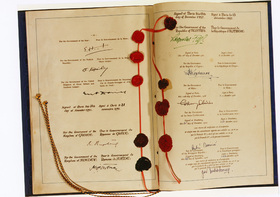European Convention on Human Rights

- European Convention on Human Rights (initially signed in 1950) (Photo: European Commission)
European Convention on Human Rights
Inspired by the UN Declaration on Human Rights, the Council of Europe established the European Convention on Human Rights and Fundamental Freedoms. A Court of Human Rights was established in Strasbourg to adjudicate on human rights violations, and member states of the Council of Europe have agreed to be bound by its judgements.
The Convention was signed in Rome in 1950 and took effect from 1953. Citizens of states which have signed up to the Convention may bring cases against their own governments, alleging breaches of human rights under the Convention.
A special Convention has drawn up the EU Charter of Fundamental Rights. This Charter has become legally binding by the Lisbon Treaty, Article 6 TEU.
The Lisbon Treaty also provides a legal base for the Union to subscribe to the Human Rights Convention. The Union has gained a legal personality allowing it to do so.
The wording does not give primacy to the Human Rights Convention as proposed by Euro-critics in the Charter Convention. If a conflict arises between the Human Rights Court in Strasbourg and the EU Court of Justice in Luxembourg, the judgment of the EU Court will hold sway according to the Lisbon Treaty.
Through the Lisbon Treaty, the Charter on Fundamental Rights have gained the same legal value as the treaties - that is to say that it is legally binding as primary EU law. The Melloni case in 2013 decided that the Charter has primacy over national constitutions.
Links
Full text of the European Convention on Human Rights http://conventions.coe.int/treaty/en/Treaties/Html/005.htm
Database of European Human Rights Court (Strasbourg) judgments http://cmiskp.echr.coe.int/tkp197/search.asp?skin=hudoc-en
